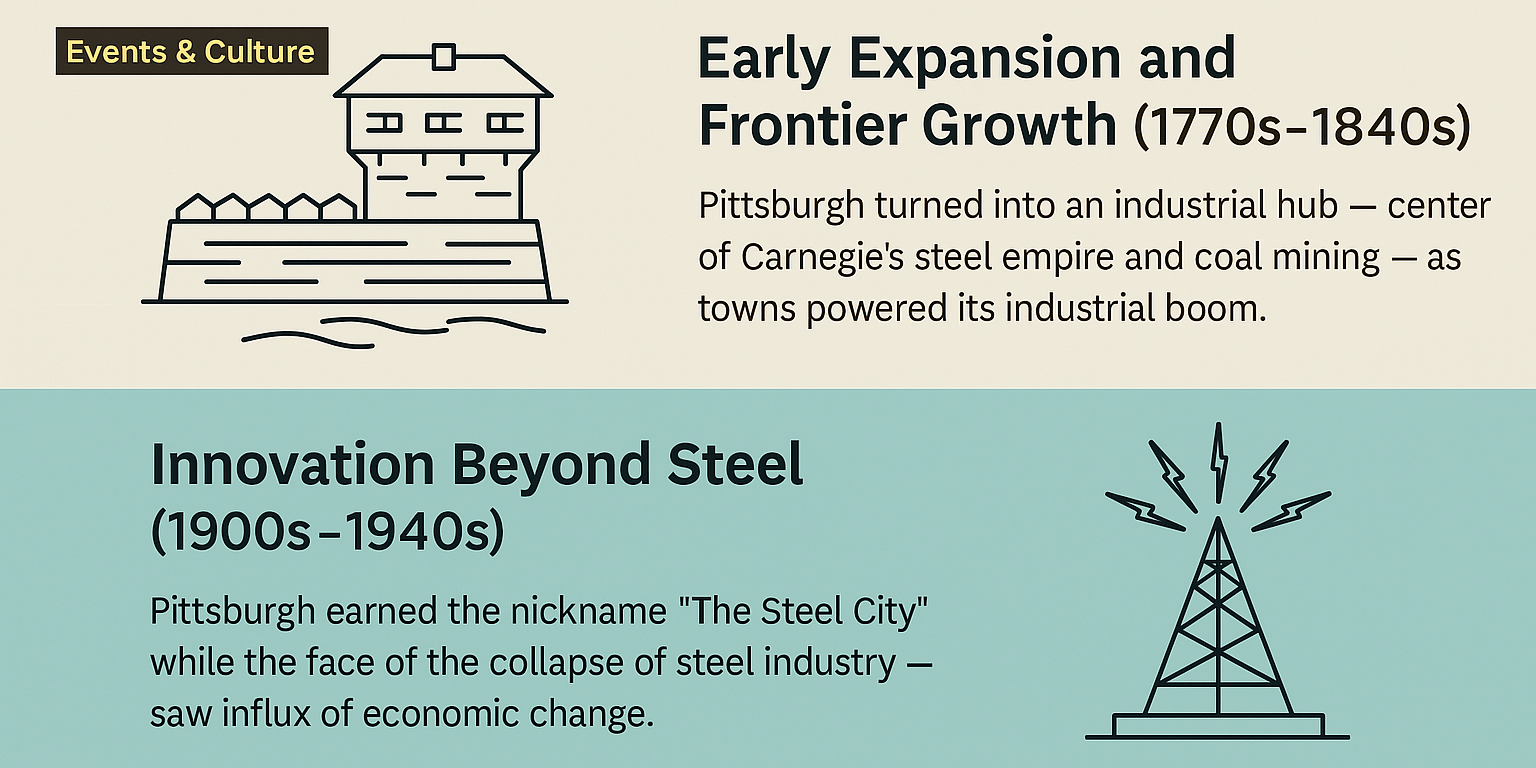Pittsburgh’s story is a vivid tapestry woven with conflict, innovation, industry, and transformation. From its earliest days as a French military outpost to its current status as a global leader in robotics and AI, Pittsburgh has constantly evolved with the times—shaped by geography, fueled by industry, and driven by people. Here’s a deep dive into the timeline that defines the Steel City’s rich and resilient history.
The Birth of a City: Fort Duquesne and Fort Pitt (1750s–1760s)
Pittsburgh’s roots begin at the confluence of the Allegheny and Monongahela Rivers, where the French established Fort Duquesne in 1754. This strategic point—known as the “Forks of the Ohio”—was hotly contested, culminating in the French and Indian War. In 1758, British forces captured the fort and renamed it Fort Pitt, in honor of British statesman William Pitt. This marked the beginning of British colonial presence in the region and laid the foundation for the city of Pittsburgh.
Early Expansion and Frontier Growth (1770s–1840s)
In the aftermath of the Revolutionary War, Pittsburgh’s location made it a natural gateway to the American West. Its rivers powered sawmills, tanneries, and glassworks—early signs of industrial potential. By the early 1800s, the city became a hub for steamboat construction and shipping, which is detailed further in The Story of Pittsburgh’s Riverboats and the Shipping Industry. Immigrants poured in, helping to establish the cultural neighborhoods that still define the city.
The Rise of Steel and Industrial Might (1850s–1920s)
Pittsburgh’s identity crystallized in the 19th century with the rise of steel. Andrew Carnegie revolutionized production, and the city’s economy soared as it became the industrial heart of America. Steel mills lined the rivers, churning out materials for skyscrapers, railroads, and ships. The city’s workforce swelled with immigrants from Eastern and Southern Europe, sparking both innovation and tension.
This era is explored in depth in The Rise and Fall of Pittsburgh’s Steel Industry and The Life of Henry Clay Frick, which dives into the powerful and polarizing industrialists of the era.
Innovation Beyond Steel (1900s–1940s)
Pittsburgh’s contributions weren’t limited to steel. It played a foundational role in the electric and aluminum revolutions. George Westinghouse pioneered electric power systems, making Pittsburgh a city that quite literally powered the nation. Learn more in The Legacy of Westinghouse.
Meanwhile, Pittsburgh’s Role in the Birth of the Aluminum Industry shows how Alcoa, founded here, pushed the boundaries of lightweight materials.
Collapse and Reinvention (1950s–1990s)
After World War II, Pittsburgh faced a series of economic challenges. Air pollution earned it the nickname “Hell with the lid off,” and by the 1980s, the collapse of the steel industry left tens of thousands unemployed.
This dark period and the city’s fight to adapt are told in Steel Titans and Silent Stacks, which chronicles the rise and fall of its industrial might. But Pittsburgh wasn’t finished yet.
From Rust Belt to Brain Belt (2000s–Present)
In recent decades, Pittsburgh has rebranded itself as a tech and healthcare powerhouse. Anchored by Carnegie Mellon and the University of Pittsburgh, Oakland has become a hub of medical and educational innovation. Explore this evolution in How Oakland Became Pittsburgh’s Education & Medical Hub.
Tech giants like Google and Uber have opened major offices in the city, and CMU’s Robotics Institute has placed Pittsburgh at the forefront of AI, automation, and self-driving cars. This shift from blast furnaces to code has not only revitalized the economy but also reshaped the city’s skyline, workforce, and identity.
Pittsburgh’s Legacy and Future
Pittsburgh continues to honor its past while investing in the future. Whether through honoring sports legends like Roberto Clemente, cultural heroes like Fred Rogers, or preserving neighborhoods like Polish Hill, the city stands as a symbol of resilience.
Its history, marked by transformation after transformation, makes it a unique example of how a city can be born from conflict, rise through industry, fall into crisis, and still find new ways to thrive.









